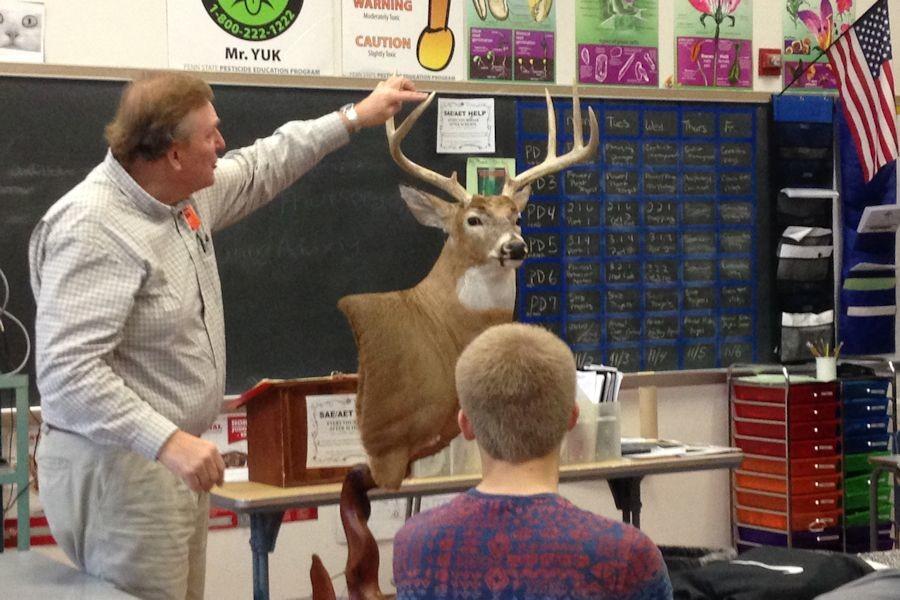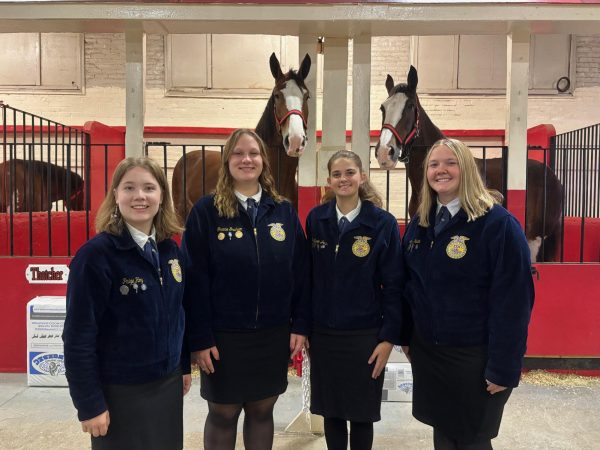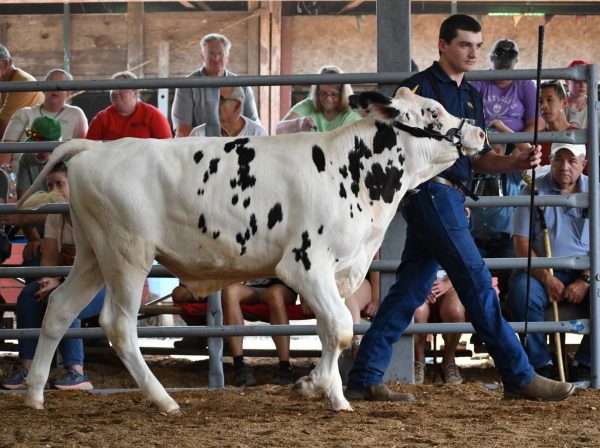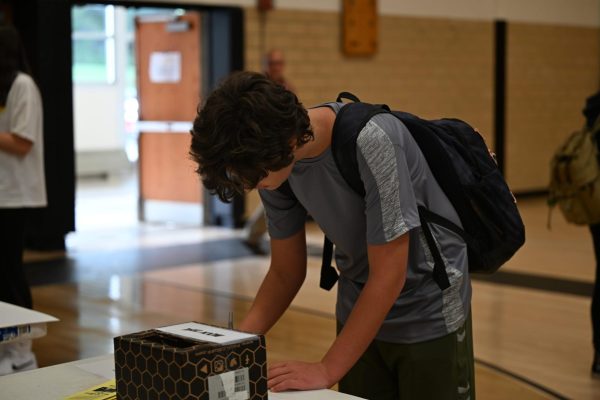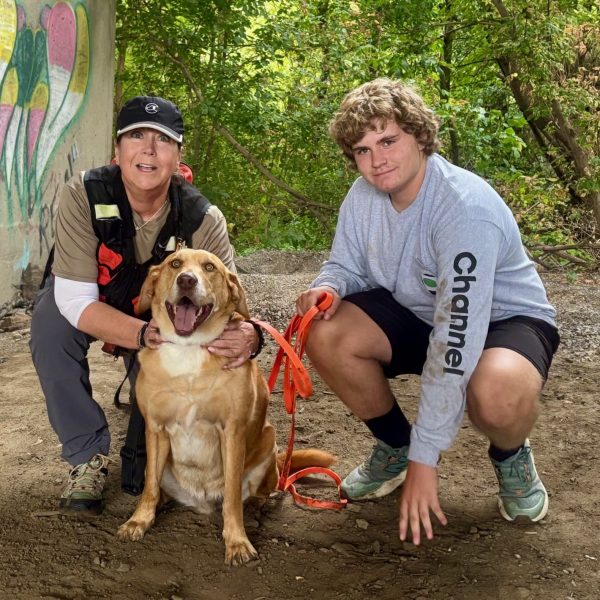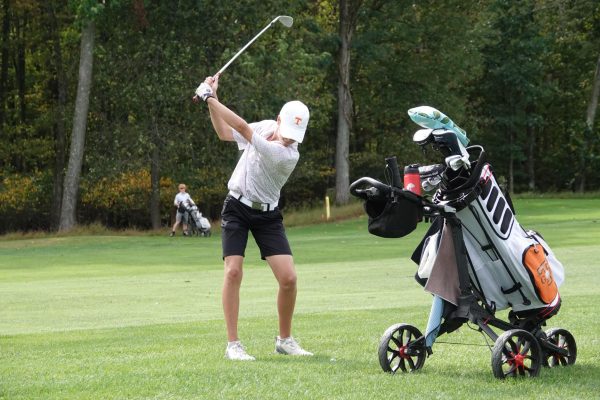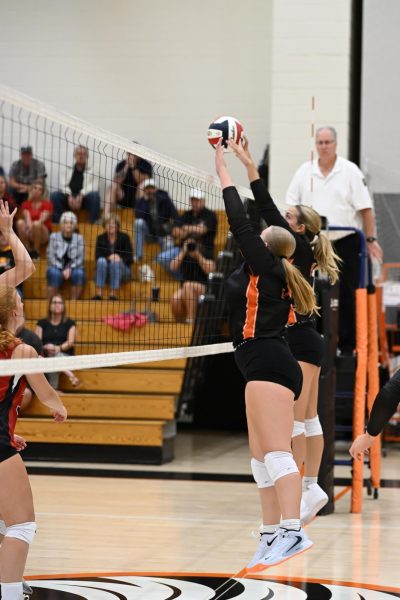Ag students learn the Art of Taxidermy
John Czerniakowski of Seven Mountains Taxidermy shows aspects of the Iowa Whitetail Deer he mounted for competition
Students enrolled in Tyrone Area’s Animal Science, Natural Resources & Ecology and Introduction to Agriculture, Food & Natural Resources courses explored the Art of Taxidermy when John Czerniakowski of Seven Mountains Taxidermy visited Tyrone High School on Thursday, November 5, 2015.
“I always enjoy when speakers come into my classroom to share their personal stories of when they started their hobbies and how it has lead into a career choice,” said Ag teacher Tiffany Hoy, “This is a great example of how a student could turn an interest into a Supervised Agricultural Experience (SAE) project and eventually a career.”
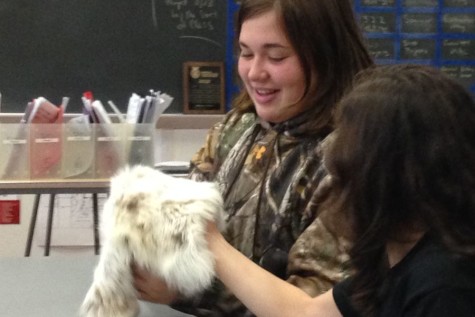
Rabbit pelt during the Taxidermy Session
Students learned how animals are mounted, cast and even painted to make a finished product.
Czerniakowski brought several examples of mounts, including a large mouth bass, a whitetail buck, and turkey.
Czerniakowski discussed a freeze drying method of preservation in which the taxidermist mounts a head on a polyurethane foam form and then places it in a freezer. This freezes the head in place. The taxidermist then places the mount in a freeze dryer – which creates a vacuum, removing the air and moisture.
The head is then removed and the taxidermist then can add feathers and mount the head with the body. The head also needs to be painted after the process. This, according to Czerniakowski, is where artistry comes into play for the taxidermist.
Students also got the chance to handle pelts and hides from several specimens: black bear, snowshoe rabbit, grey fox, red fox, bobcat and raccoon.
Ag student Michael Cherry pointed out the cartilage in the ear of the bobcat pelt and inquired about how cartilage impacts a mount. The speaker explained that depending on the preference of the taxidermist, the cartilage is either left or removed.
When mounting whitetail deer, Czerniakowski soaks the pelts and removes the cartilage to place the ears in the desired position for the client.
One interesting thing the students learned is fish mounts often do not contain any real parts of the fish.
Dr. Czerniakowski explained that fish mounts are often created by pouring silicon over the fish which creates a mold. The taxidermist then pours fiberglass in the mold to create the mount. The fiberglass is then painted based on the client’s desires and photos that he keeps in files as reference materials.

My name's Carly Crofcheck. I've been in the Tyrone Eagle Eye for four years and I'm a Senior at TAHS. Last year I was the Editor in Chief, this year...



